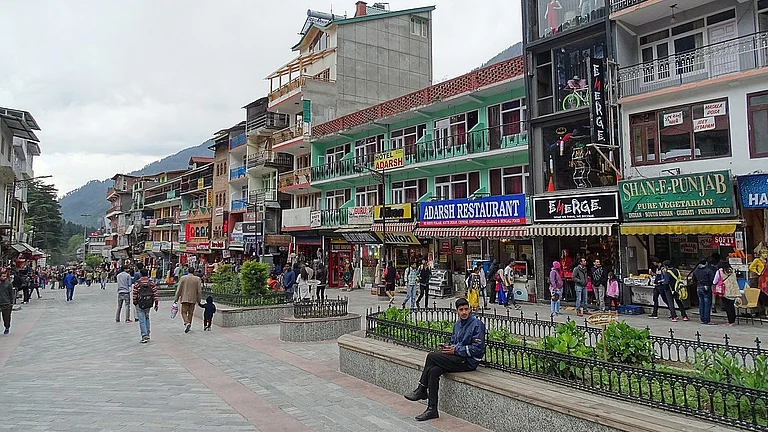Financial year 2020-21 has been one of the most volatile yet fruitful years for equity investors with the Nifty 50 posting a 67 per cent return, driven by timely support from the Central Government and RBI.
Financial year 2021-22 also seems to have started on the same note as 2020-21. Surging Covid cases led to states initiating lockdowns in the first two months. However, this time around, the stringency is not as severe as last year, with most manufacturing and related industries continuing to remain operational. The overall sentiment indicates an improvement as restrictions ease out and economic activities rebound.
The policy mix has turned supportive of growth, with the RBI's monetary policy stance remaining accommodative, and the fiscal policy stance changing towards supporting growth. This supports a slower fiscal consolidation path, indicating the government's desire to keep expenditure to GDP elevated.
The challenging macro environment in recent years has weighed on corporate sector balance sheets. However, signs of deleveraging are visible now and expected to remain benign for some time.
We have seen good spells of monsoons over the past two consecutive years. Not only has this led to improved agro-economy outlook, but also boosted the overall liquidity position of farmers despite the challenging times of the pandemic. With a normal monsoon expectation for 2022, the positive momentum in the agro-economy should continue and improvement in acreage area along with remunerative crop prices should support consumption growth.
From a medium to longer-term perspective, we see a few trends playing out strongly and businesses associated with these would-be clear beneficiaries.
Increased competition, entry of players with better technologies, changes in government policies, and stringent regulations, have led to the creation of oligopolies in a lot of sectors, including telecom, real estate, and banking. Higher compliance costs, increasing tax structures, liquidity and technology have reduced the share of unorganised players since GST/demonetisation. At the same time, organised players have gained through efforts to directly reach consumers, digitise distribution, e-commerce, and access institutional funds. While the market share of organised players has continued to rise, there remains a sizeable chunk to be captured from the unorganised. In various sectors the share of the unorganised ranges between 30-70 per cent which can be gained decisively by their organised counterparts. We believe a second wave of consolidation is underway.
Covid has accelerated digitisation across several facets of life. While technology has been around for a bit, we have seen that it takes events like these to accelerate adoption by customers. We believe these to be structural in nature which would drive faster market reach and a seamless customer experience.
Alongside this, there are a few structural changes in the world economy which are driven by globalisation, convenience, environmental norms, government regulations, and the like which also here to stay for a longer period. Apart from the implementation of the goods and services tax (GST)and the Insolvency and Bankruptcy Code (IBC), we have witnessed a step up in structural reforms by India's policy makers with focus on pushing for capex-led growth with the cut in corporate tax rates. This measure has been supported by other targeted policy steps such as production-linked incentive schemes, changes to labour laws, and creative solutions on land acquisitions that should help improve India’s competitiveness in the global landscape.
Increasing the pie of manufacturing in the country’s GDP has been on policy makers anvil for a very long time now. Factors like changing world trade relationships (exhibited by the US-China trade tensions), rethinking of trade dependence on a particular country; and government focus on promoting domestic production through targeted policy measures give us confidence that it could be successful.
This could further reinforce India's attractiveness as a manufacturing hub, given favourable demographics, a less expensive labour force, and a large domestic market. Furthermore, while this would lead to increased competition in the sectors, it would result in more customer choice, increased efficiencies, and investments. The benefits of the same will incur over the next few years and improve job creations and per capita income at the bottom of the pyramid. Building on the structural drivers of growth demographics, globalisation and reforms, the single most important means of securing India’s growth in the next decade will be investment-driven productivity growth.
While there are concerns surrounding inflationary environment globally, we note that it is mainly concentrated in the United States, where residents' income continues to grow at a high rate (supported by the government pay-out model). As vaccination continues to advance, the US is gradually liberalising controls on the service sector, and inflationary pressures are shifting from goods to services. There is widespread shortage in labour, input and logistics, and rotation of demand towards goods and commodities. When some of these transitory trends reverse, industrial cycle/commodities could cool off, but for now we are looking at global inflation ranging upwards.
The Indian economy is at an inflection point that marks the start of a new virtuous growth cycle. Within consumption, while rural consumption has remained resilient, urban consumption is gradually picking pace. We believe that in the medium to long run, the confluence of demographics, productivity and globalisation will be supportive of a higher growth rate.
The improvement in domestic demand coupled with a pickup in global demand and favourable policy response from the government would help improve capacity utilisation, which would set the stage for an eventual pickup in private capex.
While the market has been focusing on positive news inflows on the economic front, the risks facing us are emerging from higher commodity prices and that of rising inflation – both domestic as well as global. These economic risks may have negative impact on the equity markets in the short term. While near term could be bleak, we continue to like India’s long term growth story.
The author is Head - Equity, LIC Mutual Fund Asset Management Ltd.
DISCLAIMER: Views expressed are the author's own, and Outlook Money does not necessarily subscribe to them. Outlook Money shall not be responsible for any damage caused to any person/organisation directly or indirectly.

























